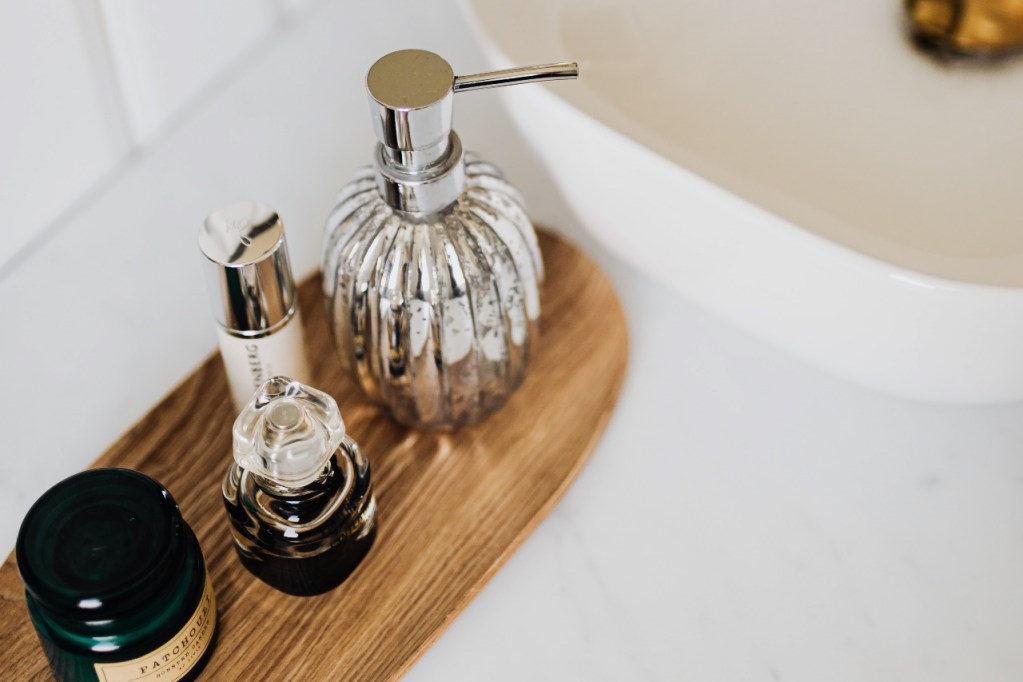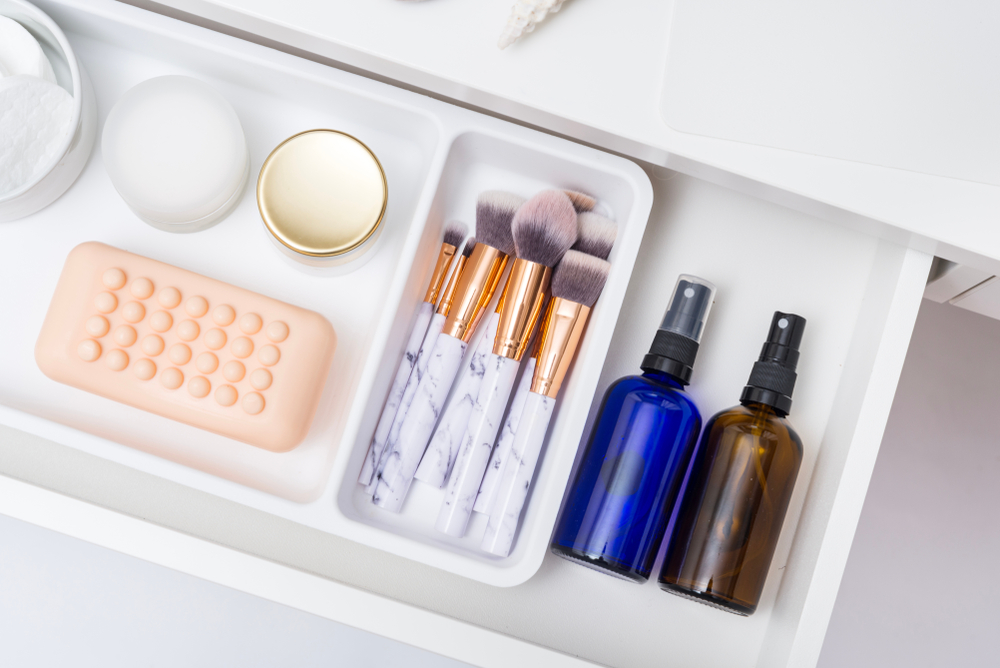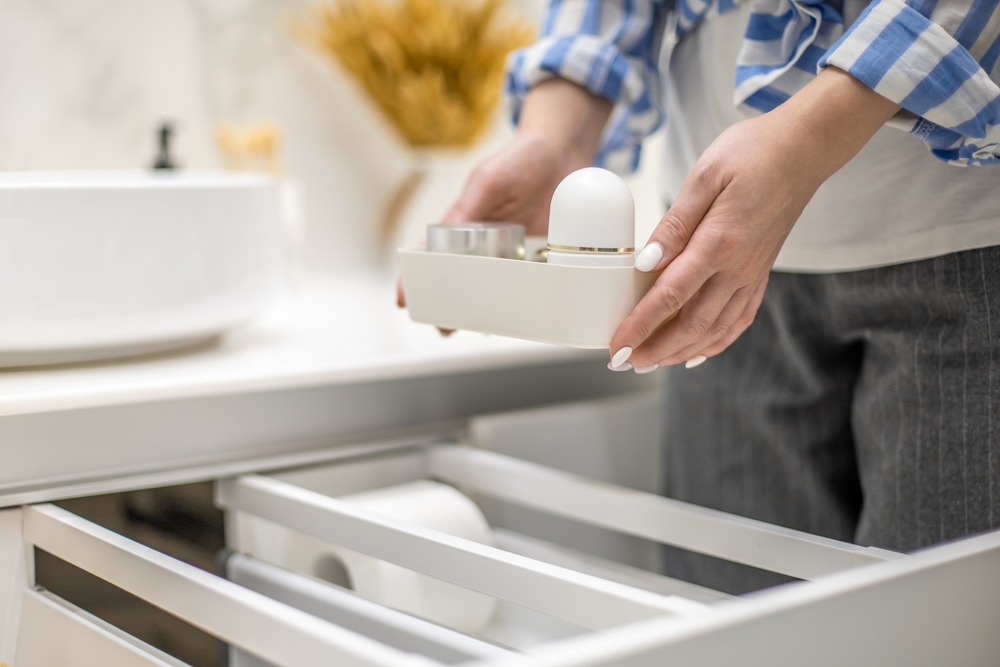We all have that one bathroom storage cabinet that’s always a complete mess, right? That huge space underneath the sink behind cabinet doors is usually where we throw miscellaneous items, from hair ties and bobby pins to shaving cream and razors.
When we inevitably need a Band-Aid or some floss, it can be difficult to find when everything is piled up in one big cabinet. To keep all your toiletries and other bathroom items stored neatly, here is how to properly organize your bathroom storage cabinet.

Clear (and maybe clean) out the entire cabinet
Step 1: Clear out the entire cabinet.
Don’t try to simply shift items around to make the cabinet look neat — that won’t do you any good and it will only go back to its original messy state because you still won’t know where things are. After this step, the cabinet should be empty.
Step 2: If your cabinet is really messy, an optional step is to wear gloves and scrub down the cabinets and items with a sponge, dish soap, and water.
Step 3: Dry everything with a paper towel.

Get rid of what you don’t need
Step 1: Keep or trash.
Now that you have all the items in front of you, take a good look at them and see what you can throw out. If you haven’t used something in the past six months, such as a certain comb or perfume, it’s safe to say you can trash it or give it to someone else.
Step 2: Sort by category.
As you take the items out of the cabinet, you might want to start sorting them by category or frequency of use, but that’s optional. Ideally, when you place everything back, you’ll want your most-used items in the front and the least-used in the back.

Organize by size
Though the frequency-of-use method is preferred for organizing most storage spaces, especially drawers, your bathroom storage cabinet could benefit from size organization.
Step 1: Place large items in the cabinet.
We recommend taking the largest items, such as your hair dryer, a bottle of mouthwash or soap, and cleaning supplies, and placing them in the back of the cabinet so they don’t obstruct the view of the rest of your things.
Step 2: Place small items in small trays.
Take out those small trays. We recommend using about four to six of these to separate different types of items. Take your smaller items and sort them into these trays to place in the front of the cabinet, and in front of your large items. Sort small items, such as hair accessories, body sprays, lotions, first aid, and more.

File (don’t stack) items for easy access
Tip: Use the filing method.
As you place the items in your cabinet, don't stack them. When you stack things, they tend to fall over and create a mess, especially when you need something on the bottom. Instead, use the filing method of organizing. This means you’re placing items horizontally next to one another, rather than vertically on top of one another. This will make it easier for you to find things as well.
Congratulations! You’ve made it through our steps for how to properly organize a bathroom storage cabinet. The task can seem daunting when you have this gaping hole full of bathroom supplies to sort through. But once you get in the groove and follow our steps, you’ll have an organized bathroom storage cabinet in no time.




